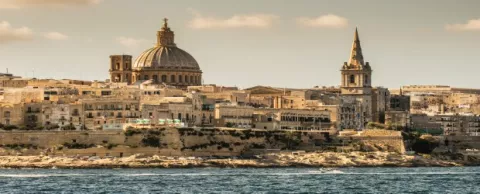
Malta's capital aims to be a carbon-neutral city by 2030. Following in the footsteps of other successful areas that are part of the Smart Sustainable Districts programme (such as Moabit West in Berlin and Les Docks de Saint-Ouen in Paris), Valletta is working on a series of projects that could help similar cities who also have to take elements like tourism and historic features into account. Here's how the city is looking at everything from underground water cisterns to rooftop gardens to clean up its act and meet its carbon neutral goal.— Philippe Leonard
The start to a smart district
As part of Europe’s largest public-private innovation partnership centred around climate change, Climate-KIC is working together with city stakeholders to “transform cities one district at a time,” honing in on one particular area of a city to help make it sustainable, low carbon and climate resilient. The programme has already supported 12 district projects across Europe, including Kalasatama in Helsinki, where a new district is being built along an old commercial harbour. In this case, the district is looking at open data from its citizens to improve city infrastructure and develop apps like ‘Rentapark,’ a parking share space service designed to reduce traffic and CO2 emissions.
While districts like Kalasatama are one example of how cities can reduce their carbon footprint, Valletta poses the need for other types of smart solutions, since the city is building on centuries of history. The walled capital is a tourist destination, as well as home to commercial, leisure and entertainment centres. It’s no surprise then that traffic management is one of the key areas the project is looking to tackle, presenting a series of solutions from increasing pedestrian areas to removing cars entirely from the district. The introduction of electric vehicles or bicycles is another way to help reduce carbon emissions in the city while providing a few different environmentally friendly options for citizens and visitors.
“It’s still early days, so the possibilities of what kind of projects could work are endless,” said Mark Anthony Brown, Paragon Europe’s network developer for the project, in an article on TimesofMalta.com.
In addition to making the city greener by building rooftop gardens, the project is looking at incorporating some of the district’s historical features, such as the interconnected underground water storage cisterns, 95 percent of which are unused.
By focusing on one district, especially a historic one like Valletta, the project is proving that cities don’t have to start from the ground up in order to become more sustainable. They can work to improve one area at a time, which when combined will create a smarter city—and country—improving the quality of living for citizens while offering an attractive tourist destination for visitors.



